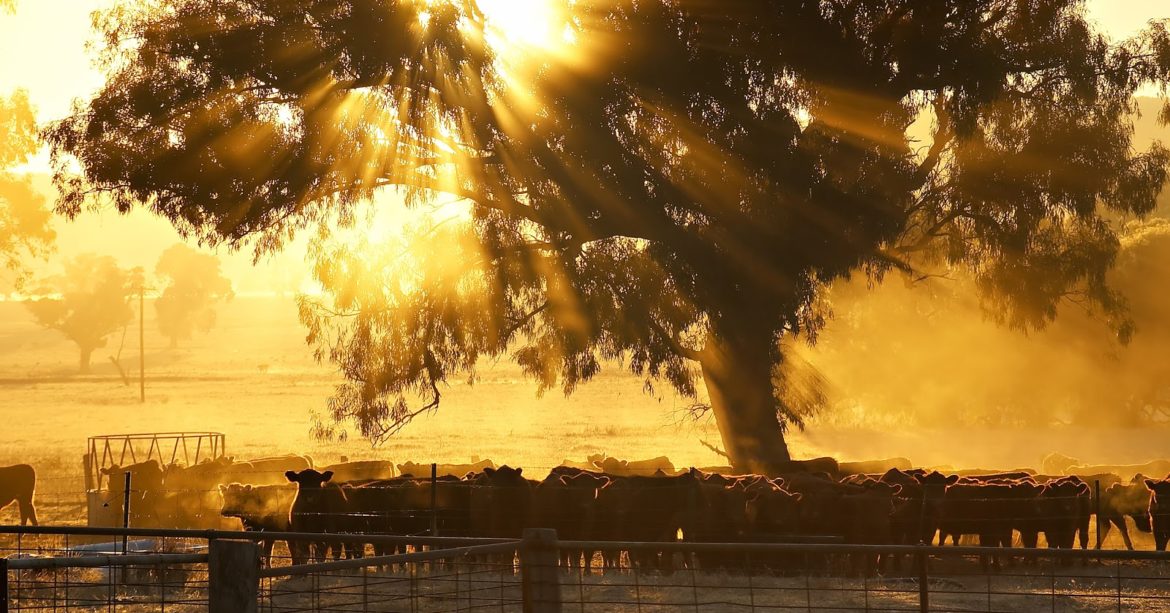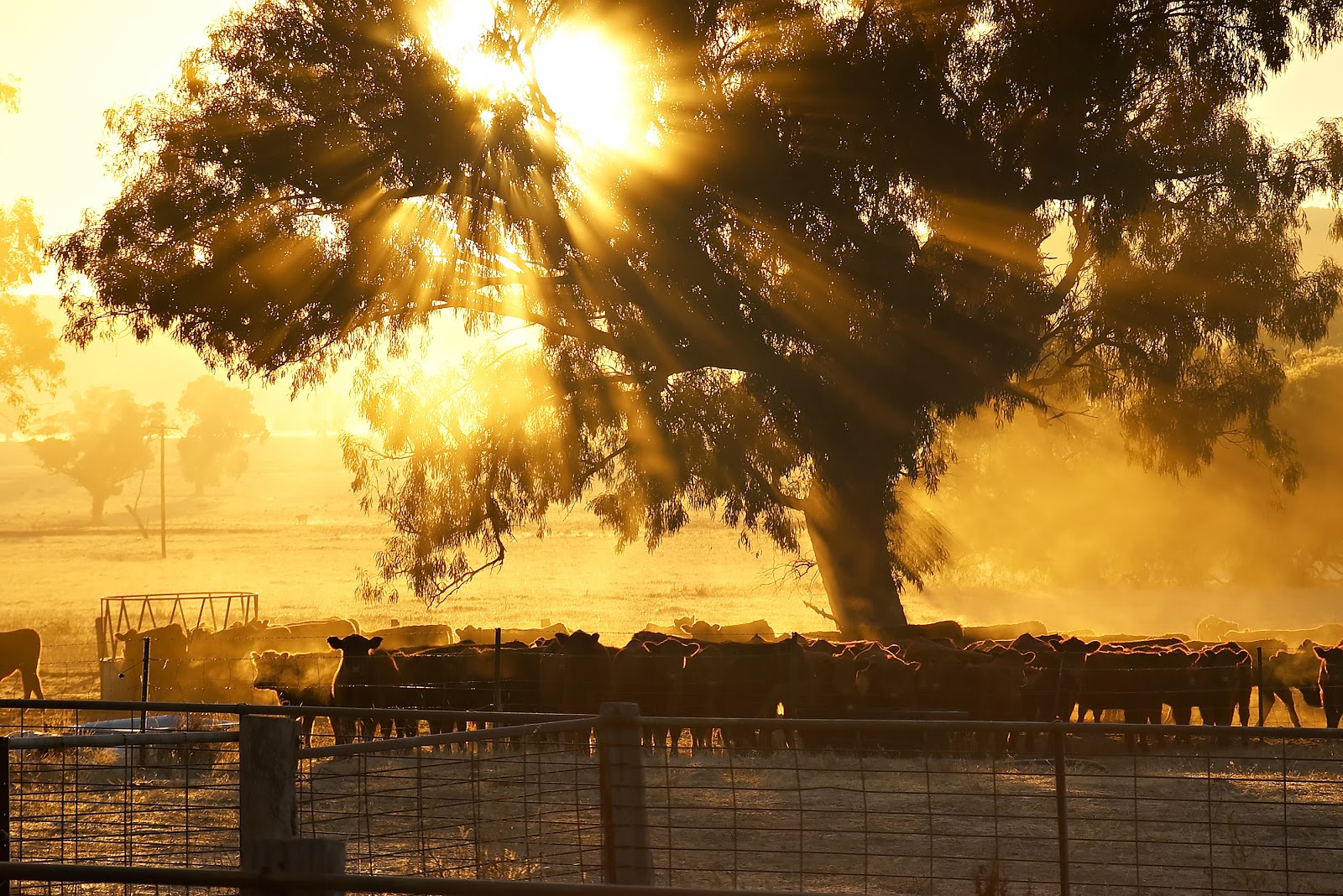How does weather affect cattle?
Keeping your cattle healthy is important if you want them to be productive. With this in mind, the weather is one of the most important things that you need to consider. This is because changes in weather conditions can lead to heat stress or cold stress in your cattle if you are not careful.
You need to have a good understanding of the way your cattle regulate their body temperature and the way that weather changes can affect this. If you have this understanding, you can reduce the risk of temperature associated stress and the health risks that come with it.
Key points
- Cattle have a limited ability to regulate body temperature
- Factors that affect cattle include air temperature, humidity levels, the amount of solar radiation, and if able to cool off at night.
- Cold stress also occurs from wind chill, a high wind speed and in wet weather
- Sheds & shelter that are well-ventilated are important to aid air movement
Need a Quote?
Darwin Cattle Yards
Ridgeback TM at Darwin cattle yards
RECOMMENDED ARTICLE
Managing cow heat stress to cut production losses – Entegra Signature Structures
Body temperature regulation in cattle
Cattle can regulate their body temperature but only to a certain extent. They do this by using thermoregulation which has limitations. This is why it’s so important for you to manage your cattle’s environment to help them keep their body temperature regulated.
You should bear in mind that several factors can affect the body temperature of cattle including:
- Length of the hair coat on different breeds of cattle.
- Humidity in the atmosphere.
- Body condition of cattle.
- Diet.
- The available shelter.
The thermoneutral zone is the body temperature comfort zone for cattle. This is usually from -15°C to +25°C although it can vary depending on the breed. The lower end of this scale (-15°C) is called the Lower Critical Temperature (LCT) and the higher end (+25°C) is called the Upper Critical Temperature (UCT).
It’s at these points that cattle take certain actions to maintain their body temperature, such as taking in more food to increase temperature or increasing respiration to reduce temperature. When cattle struggle with this temperature regulation, they can begin to suffer from stress.
RECOMMENDED ARTICLE
No weather worries for Darwin cattle yards – Entegra Signature Structures
Heat stress in cattle
Several factors can affect how effectively cattle manage their body temperature when it reaches the UCT. These factors include air temperature, humidity levels, the amount of solar radiation, and how much they are able to cool off at night.
Cattle that are most at risk of heat stress
Several types of cattle are more at risk of heat stress than others including:
- Overfat cattle
- Calves.
- Cattle that have dark colouring.
- Dairy cattle that are high producing.
- Cattle that have health issues.
Signs of heat stress in cattle
When cattle start to develop heat stress, there are several signs to look out for including excessive slobbering, open-mouthed breathing, and a lack of coordination. They may also lack energy and appear restless. In addition, cattle often crowd together, look for shade, and stand close to water when they are suffering from heat stress.
Reducing the risk of heat stress in cattle
Ideally, you should aim to stop heat stress from happening in the first place and you should certainly take action to cool cattle down if they show any symptoms. With this in mind, there are several things that you can do including:
- Making sure that sheds are well-ventilated to aid air movement..
- Providing shelter that gives protection from the sun.
- Creating shade from trees in outdoor areas.
- Providing access to clean, fresh water. This water access should be familiar to cattle and sufficient volume should always be maintained.
The effect of cold weather on cattle
Although heat stress is a more common issue for cattle in Australia, it’s also possible for cold stress to occur. This usually happens when there is a wind chill, a high wind speed, and the weather is wet.
The dangers of cold stress
Several issues can occur if cattle succumb to cold stress. These issues include an inability to gain weight and reduced milk production. There can also be an increase in milk fat. The dangers for animals that are high risk are more severe and can include death.
Cold stress can occur once cattle reach the LCT. As their body temperature decreases, their energy requirement increases. This energy is needed in order to increase body temperature. This means that their food intake is used to produce this energy and they end up losing weight resulting in thin cows that are not as healthy as they should be. .
Cattle that are at most risk of cold stress
Some cattle are more at risk of cold stress than others. This includes:
- Cows that are calving.
- New-born calves.
- Cattle that are not in good condition.
- Cattle that have health issues.
Reducing the risk of cold stress in cattle
In order to protect your cattle from cold and wet weather conditions, you must provide them with easy to access shelter. This shelter should be well-ventilated so that moisture does not build up. The bedding should be fresh, clean, and dry. It’s also important to make sure that cattle are housed communally so that they can gather together during cooler weather.
You can see that weather can have a serious effect on your cattle’s stress. Therefore, fluctuations in temperature should be monitored and you should make sure that you provide conditions that protect your cattle from extremes of hot or cold weather.



